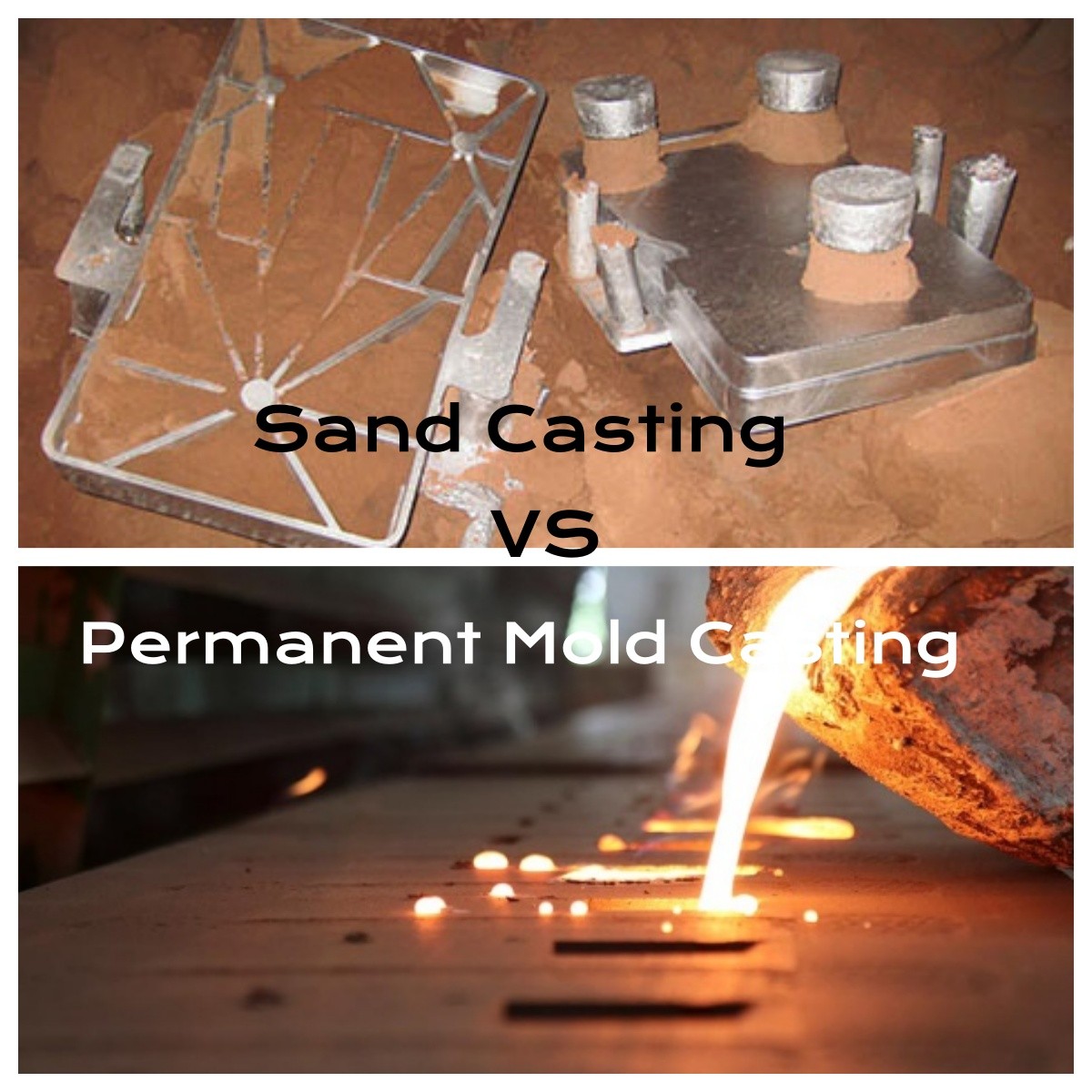Sand Casting VS Permanent Mold Casting

When choosing between sand casting and permanent mold casting, several factors such as budget, production volume, and the type of object being cast must be considered. Both methods involve pouring molten metal into molds, but the differences in mold materials and processes result in distinct advantages and disadvantages.
Sand Casting
Process:
Uses sand as the mold material.
A pattern is created and surrounded by sand to form a cavity for the cast.
Sand mold is typically made from a mixture of silica grains, clay or bentonite, and water.
Molds can be shaped by hand or machine.
Advantages:
Lower Production Costs: Sand casting is generally less expensive than permanent mold casting.
Large Component Fabrication: Suitable for creating very large parts.
Material Versatility: Can be used with various materials, including cast iron, copper alloys, aluminum alloys, and steel.
Low Tooling Costs: Post-casting tooling costs are relatively low.
Disadvantages:
Lower Accuracy: Sand casting does not provide the precision needed for parts requiring tight tolerances.
Additional Machining: Cast parts often require extra machining, increasing overall costs and weight.
Surface Finish: Parts tend to have a rough surface finish.
Slow Cooling Rate: The sand mold cools slowly, leading to a looser grain structure.
Single-use Molds: Molds are destroyed after each use, necessitating new molds for each casting.
Permanent Mold Casting
Process:
Utilizes a reusable mold made from steel or copper alloy.
Molds are coated with a graphite mix to prevent the cast metal from sticking.
Advantages:
High Accuracy: Provides greater dimensional accuracy and consistency.
Environmental Benefits: Reusable molds reduce waste, and molds can be recycled after use.
Fast Cooling: Rapid cooling results in a tighter grain structure, improving material properties.
Homogeneous Parts: Produces parts with uniform properties, minimizing hot spots and weak points.
Higher Strength: Cast parts generally exhibit higher strength due to the refined grain structure.
Disadvantages:
High Mold Cost: The initial cost of creating the mold is high, making it less suitable for low-volume production runs.
Conclusion
Permanent Mold Casting is generally considered superior for applications requiring high accuracy, strength, and surface finish, despite its higher initial cost. It is especially beneficial for larger production runs where the cost of the mold can be amortized over many parts. In contrast, Sand Casting is more cost-effective for low-volume production and large components, though it sacrifices precision and requires more post-casting machining.
For high-precision parts with tight tolerances and superior material properties, permanent mold casting is the preferred choice. However, for prototypes, small batches, or very large parts, sand casting remains a viable and economical option.
Dongrun Casting have 20000 square meters facility houses and 200 production & test equipment, From quotation and tooling design to casting and finished machining, we can work with you at every stage. We serves wide range of industries-from Fortune 500 corporations to small and midsize OEMs. Our products includes: Automotive&Trucking, Electric Utility & Communications, Metering System, Hydraulic Industry, Medical Devices, Lighting, Fuel and Gas Pressure, Furniture parts.
More Details : www.dongruncasting.com
